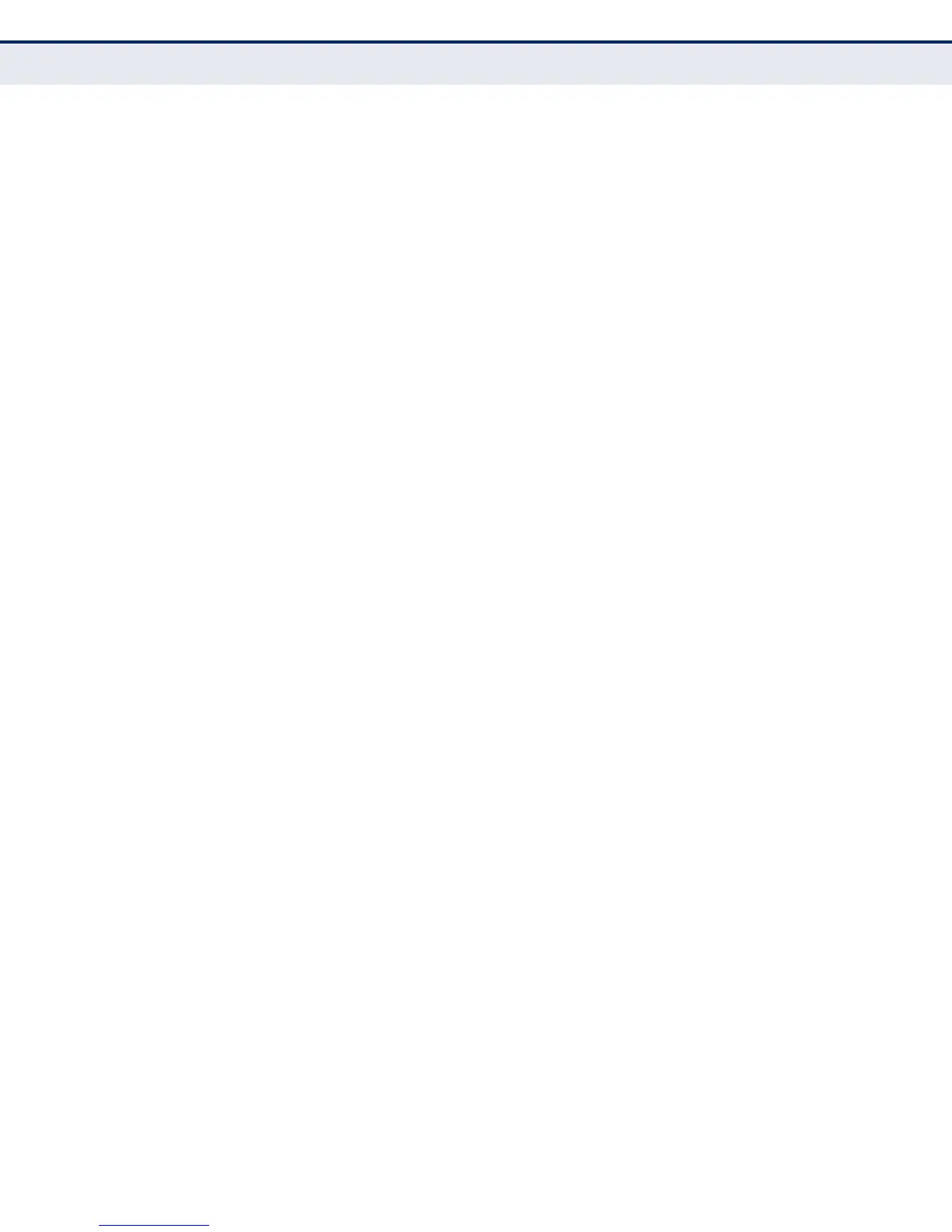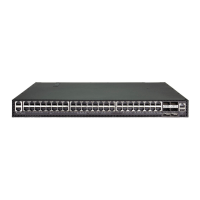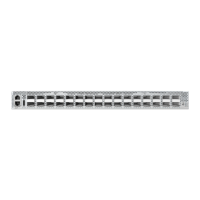C
HAPTER
13
| Security Measures
Access Control Lists
– 290 –
◆ Source/Destination Address Type – Specifies the source or
destination IP address. Use “Any” to include all possible addresses,
“Host” to specify a specific host address in the Address field, or “IP” to
specify a range of addresses with the Address and Subnet Mask fields.
(Options: Any, Host, IP; Default: Any)
◆ Source/Destination IP Address – Source or destination IP address.
◆ Source/Destination Subnet Mask – Subnet mask for source or
destination address. (See the description for Subnet Mask on
page 288.)
◆ Source/Destination Port – Source/destination port number for the
specified protocol type. (Range: 0-65535)
◆ Source/Destination Port Bit Mask – Decimal number representing
the port bits to match. (Range: 0-65535)
◆ Protocol – Specifies the protocol type to match as TCP, UDP or Others,
where others indicates a specific protocol number (0-255).
(Options: TCP, UDP, Others; Default: TCP)
◆ Service Type – Packet priority settings based on the following criteria:
■
ToS – Type of Service level. (Range: 0-15)
■
Precedence – IP precedence level. (Range: 0-7)
■
DSCP – DSCP priority level. (Range: 0-63)
◆ Control Code – Decimal number (representing a bit string) that
specifies flag bits in byte 14 of the TCP header. (Range: 0-63)
◆ Control Code Bit Mask – Decimal number representing the code bits
to match. (Range: 0-63)
The control bit mask is a decimal number (for an equivalent binary bit
mask) that is applied to the control code. Enter a decimal number,
where the equivalent binary bit “1” means to match a bit and “0”
means to ignore a bit. The following bits may be specified:
■
1 (fin) – Finish
■
2 (syn) – Synchronize
■
4 (rst) – Reset
■
8 (psh) – Push
■
16 (ack) – Acknowledgement
■
32 (urg) – Urgent pointer
For example, use the code value and mask below to catch packets with
the following flags set:
■
SYN flag valid, use control-code 2, control bit mask 2
■
Both SYN and ACK valid, use control-code 18, control bit mask 18
